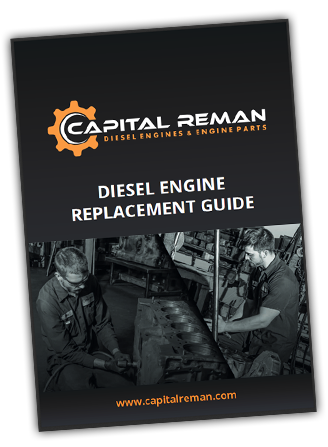Engine Oil Soot, Carbon, and Blow-by Issues in Heavy-Duty Diesel Engines
For semi-truck drivers, fleet managers, and over-the-road truckers, maintaining the health of your engine is critical to the longevity of your vehicle and the safety of your operations. Among the array of maintenance challenges, engine oil soot, carbon buildup, and blow-by are issues that can compromise the performance and efficiency of Cat, Cummins, Mack, and Detroit Diesel engines.
Blow-by In Diesel Engines and Its Causes
Blow-by occurs when combustion gases escape past the piston rings into the crankcase. This phenomenon is common in both gas and heavy duty diesel engines. Blow-by leads to several problems, including oil contamination and lower engine efficiency.
Worn Piston Rings and Cylinder Liners
Blow-by is primarily caused by wear and tear on piston rings and cylinder liners. Rings and liners are designed to create a tight seal within the engine. Over time, however, they can become worn, allowing gases to leak into the crankcase. Wear of the rings and liners can result from regular use, particularly in high-mileage vehicles, or from operating in conditions that place too much stress on the engine.
Contamination Within The Engine
Contamination within the engine, often resulting from inadequate maintenance or poor-quality oil and fuel, can exacerbate wear and tear on engine components. Contaminants can cause abrasion and corrosion, leading to decreased efficiency of the piston rings and cylinder liners and, consequently, increased blow-by.
High Mileage and General Wear
Heavy Duty Diesel Engines with high mileage will typically show more signs of wear and tear. Due to high mileage, heavy loads and prolonged engine stress, efficiency can be reduced over time while increasing susceptibility to conditions for any engine whether it be a Caterpillar, Cummins, Detroit, or Mack.
Excessive Heat Can Lead To Increased Blow-by
Excessive heat conditions can also lead to increased blow-by. High temperatures can cause engine oil to break down more quickly, reducing its ability to lubricate and protect engine components, thus accelerating wear and allowing for greater leakage of combustion gases.
Addressing the Issue of Blow-by
Proper maintenance and attention to any signs of wear or damage can help address the issue. Regular oil changes--using high-quality engine oil--and ensuring that your engine operates within recommended temperature ranges all matter when it comes to blow-by. Also, monitoring engine performance and regular inspections can help identify issues early before they become serious problems.
If an engine already exhibits signs of blow-by, consult a professional mechanic or engine specialist to manage the issues as best as possible. Sometimes, replacing worn piston rings or cylinder liners may be necessary to restore engine performance.
As technology continues to evolve, another option to consider is speaking to Capital Reman Exchange about High-Performance Heavy Duty Engine Kits. Capital Reman Exchange offers specially coated parts that are designed to increase performance, better withstand heat/friction, and allow wear parts to be less susceptible to the conditions that cause blow-by in the first place.
Conclusion
Engine oil soot, carbon buildup, and blow-by are critical issues that require immediate attention and maintenance of semi-trucks and other heavy-duty diesel vehicles. By recognizing the causes of these problems and keeping to a proper maintenance schedule, drivers and fleet managers can help ensure their vehicles remain reliable, efficient, and safe on the road.
Maintaining your diesel engine regularly will protect your investment and ensure the safety and reliability of your operations, underscoring your commitment to your well-being and success on the road.





